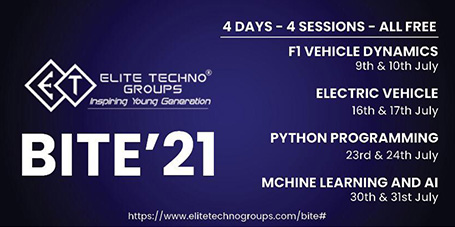|
|
Digital payment startup BharatPe raises Rs 139 crore debt from Alteria Capital, ICICI Bank
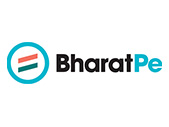 Founded by Ashneer Grover and Shashvat Nakrani in 2018, BharatPe offers merchants a single interface for all UPI apps like Paytm, PhonePe, Google Pay, BHIM, Mobikwik, Freecharge and others. It also facilitates loan facility for its merchant partners. Founded by Ashneer Grover and Shashvat Nakrani in 2018, BharatPe offers merchants a single interface for all UPI apps like Paytm, PhonePe, Google Pay, BHIM, Mobikwik, Freecharge and others. It also facilitates loan facility for its merchant partners.
Fintech company BharatPe on Sunday said it has raised Rs 139 crore (about USD 20 million) in debt from venture debt firm Alteria Capital and ICICI Bank that will be used to strengthen its lending business and provide credit to merchants.
Founded by Ashneer Grover and Shashvat Nakrani in 2018, BharatPe offers merchants a single interface for all UPI apps like Paytm, PhonePe, Google Pay, BHIM, Mobikwik, Freecharge and others. It also facilitates loan facility for its merchant partners.
Speaking to PTI, BharatPe co-founder and CEO Ashneer Grover said Rs 90 crore in debt came from Alteria Capital, while the remaining Rs 49 crore was from ICICI Bank.
“We have raised funds from ICICI Bank at a competitive interest rate of less than 9 per cent. We are aggressively building our lending vertical and our loan book is currently at Rs 400 crore.
“With this infusion, we can double down on our efforts and we expect the loan book to grow to Rs 700-750 crore by the end of March 2021,” he added.
Grover said BharatPe had set a target of disbursing Rs 1,000 crore of loans in 2020-21, of which Rs 800 crore has already been disbursed.
“The latest tranche of debt raised will help further build the lending business and enable credit for millions of businesses, across the length and breadth of India,” Grover said.
Last week, BharatPe raised Rs 60 crore in debt from Innoven Capital. With this, BharatPe has raised a total of Rs 199 crore (USD 28 million) in debt till date. It had said it plans to raise over Rs 5,000 crore in debt funding in the next two years to build its lending business.
“We have committed ourselves to provide USD 700 million of loans to small merchants and kirana store owners by March 2023 and are hoping to onboard more institutional debt partners in the near future,” he said.
Grover added that the company aims to become a digital bank that is the one-stop destination for merchants for all kinds of financial services and this tranche of funds will get things rolling.
Merchants are the top priority for the company and it is committed to solving the credit problem for them, he said.
“The institutional debt raised will help catapult our lending business. We intend to raise close to USD 700 million of debt capital over the next two years… By March 2023, our aim is to be present in 300 cities and have the lending product available in 200 cities,” he added.
Grover said the company has already disbursed loans to more than one lakh merchants and aims to scale this up by 8-10 times and enable credit for a million kirana store owners in 2021.
Currently, serving over 50 lakh merchants across 65 cities, the company has grown business 30 times in 2019 and processed over six crore UPI transactions a month (annualised transaction processed value of over USD 7 billion).
BharatPe has raised close to USD 171 million in equity and debt till date. The company’s investors include Beenext, Sequoia, SteadView Capital, Ribbit Capital, Coatue Management LLC, Insight Partners, and Amplo. (Source: Financial Express)
|
Cisco reaches new deal to acquire Acacia for $4.5 billion
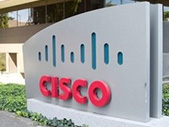 Cisco initially offered to acquire Acacia for $70 a share, or $2.6 billion in July 2019.
Cisco initially offered to acquire Acacia for $70 a share, or $2.6 billion in July 2019.
Networking giant Cisco has agreed to acquire Acacia for $115 per share in cash, or approximately $4.5 billion.
Acacia is a component supplier and maker of high-speed optical interconnect technology for networking systems.
Cisco initially offered to acquire Acacia for $70 a share, or $2.6 billion in July 2019.
"I am delighted that Cisco and Acacia have decided to come together in this mutual deal," said Chuck Robbins, chairman and CEO, Cisco.
"We look forward to welcoming Raj and the Acacia team to Cisco to offer our customers world-class coherent optical solutions to power the Internet for the future," Robbins said in a statement on Thursday.
Upon completion of the acquisition, CEO Raj Shanmugaraj and Acacia employees will join Cisco's optics business.
Cisco and Acacia expect to complete the acquisition by the end of the first calendar quarter of 2021.
Last week, Acacia announced to terminate its merger agreement with Cisco after the company had failed to meet a set of closing conditions such as "obtaining necessary regulatory approvals within the timeframe contemplated by the merger agreement."
Cisco said it is committed to supporting Acacia's existing and new customers around the world that require industry-leading coherent optics, digital signal processing/photonic integrated circuit modules and transceivers for use in networking products and data centres.
"We maintain our strong conviction in the strategic benefits of joining the Cisco family and believe it will enable us to better support our existing customers, while reaching an expanded footprint of new customers globally," said Raj Shanmugaraj, president and CEO of Acacia.
Cisco said the acquisition will benefit its existing enterprise network portfolio. (Source: ETTelecom)
|
No policy changes till May, WhatsApp says will clear the doubts
 The updated policy terms were first announced via an in-app notification to users by WhatsApp, owned by Facebook, asking them to agree to the new terms by February 8 or lose access to their accounts.
The updated policy terms were first announced via an in-app notification to users by WhatsApp, owned by Facebook, asking them to agree to the new terms by February 8 or lose access to their accounts.
Instant messaging platform WhatsApp announced late on Friday that it was delaying the implementation of its recent privacy policy changes, which triggered a global backlash, to May 15, instead of the scheduled February 8.
The updated policy terms were first announced via an in-app notification to users by WhatsApp, owned by Facebook, asking them to agree to the new terms by February 8 or lose access to their accounts. As both users and privacy activists raised the alarm, WhatsApp clarified that the changes were necessary to help businesses through WhatsApp Business, which was launched by the company in 2018 to facilitate communication between businesses and customers.
“We’re now moving back the date on which people will be asked to review and accept the terms. No one will have their account suspended or deleted on February 8. We’re also going to do a lot more to clear up the misinformation around how privacy and security works on WhatsApp. We’ll then go to people gradually to review the policy at their own pace before new business options are available on May 15,” WhatsApp said in a blog update on Friday. (Source: The Indian Express)
|
MeitY draft: PLI outlay for laptops, servers at Rs 7,500 crore
 The investment targets for overseas players would be fixed at around Rs 500 crore spread over a period of four years (Rs 125 crore per year) while for local companies it would be Rs 20 crore (Rs 5 crore per year). The investment targets for overseas players would be fixed at around Rs 500 crore spread over a period of four years (Rs 125 crore per year) while for local companies it would be Rs 20 crore (Rs 5 crore per year).
The outlay for production-linked incentives to make laptops, tablets, personal computers and servers has been pegged at Rs 7,500 crore with the benefits expected to be in the range of 2-4%. Much like it did when it rolled out production-linked incentive (PLI) scheme for manufacturers of mobile phones, the government is likely to set different qualifying targets for domestic and overseas companies, official sources told FE. While overseas players would be eligible for incentives if laptops are priced over Rs 30,000 and tablets cost more than Rs 15,000, local players would not be subject to this condition. MeitY is hoping to roll out the scheme by April 1 following an in-principle clearance by the Cabinet.
The investment targets for overseas players would be fixed at around Rs 500 crore spread over a period of four years (Rs 125 crore per year) while for local companies it would be Rs 20 crore (Rs 5 crore per year). The annual production targets over the base year, that would make firms eligible for the benefits, are yet to be decided.
India is aspiring for a more than five-fold increase in electronics manufacturing to $400 billion by FY2025, by focusing on export markets and incentivising manufacturers to become globally competitive. In the case of laptops tablets and servers, the objective is to try and transfer 20% to 30% of the world’s manufacturing to India.
Last April, the government rolled out a PLI scheme for large scale electronics manufacturing. The scheme extended incentives of 4% to 6% on incremental sales over the base year for goods manufactured in India for a period of five years subsequent to the base year as defined. However, applicants have indicated to the government they will not be able to meet the manufacturing targets before the March-end deadline and have sought a rollover of the milestones to the second and third years. This is only for those firms that meet their investment targets for the first fiscal.
Experts believe mobile PLI-applicant companies are likely to meet first-year incremental revenue target despite challenges posed by Covid-19. Given low base and large entry-level mobile market (1,300 millio units below $200), incremental revenue targets for domestic mobile manufacturers should not be hard to achieve. (Source: Financial Express)
|
DoT cuts revenue estimate from telecom sector to Rs 40,000 crore: Report
 The government expects to gain revenues of Rs 40,000 crore from the telecom sector, less than a third of the budget estimate of Rs 1.33 lakh crore. The government expects to gain revenues of Rs 40,000 crore from the telecom sector, less than a third of the budget estimate of Rs 1.33 lakh crore.
The government expects to gain revenues of Rs 40,000 crore from the telecom sector, less than a third of the budget estimate of Rs 1.33 lakh crore.
The reasons for the significant cut in the estimate is due to the absence of 5G airwaves in next auctions and limited payments towards past adjusted gross revenue (AGR) dues, The Economic Times reported.
Since 5G spectrum will be absent during the auction in March 2021, the Department of Telecommunications (DoT) is expecting companies to make maximum upfront payments of only around Rs 10,000 crore in FY20. This would lead to overall proceeds of around Rs 40,000 crore, the report said.
"The initial (revenue) estimates of Rs 1.3 lakh crore had taken a 5G spectrum auction and AGR dues into account," an official told The Economic Times.
"But it does not look like the telcos are paying anymore AGR dues till this fiscal gets over," the official added.
Payment of AGR-related dues by telecom companies is expected to be around Rs 1,000 crore, the report said. (Source: Money Control)
|
BSNL tender: The curious case of indigenous 4G core and Mavenir
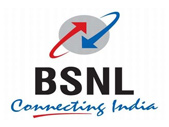 The most interesting development is a claim made by OpenRAN major Mavenir at the recent BSNL meeting, which was attended by home-bred and multinational vendors and system integrators. Texas-based Mavenir claimed that their 4G core is indigenous, at least three senior executives from vendors told ET. The most interesting development is a claim made by OpenRAN major Mavenir at the recent BSNL meeting, which was attended by home-bred and multinational vendors and system integrators. Texas-based Mavenir claimed that their 4G core is indigenous, at least three senior executives from vendors told ET.
The suspense over 4G core from home-bred telecom vendors continues to grow even after the release of EoI document by state-run telco, BSNL of the pan-India 4G deployment.
While multinational vendors have been barred from providing their core for BSNL’s 4G network, three companies have claimed 4G core preparedness in India, sources familiar with the matter said.
State-run C-DOT (The Centre for Development of Telematics) and a lesser-known IT and telecom solutions company, PertSol, have claimed that they can provide 4G core for BSNL’s upcoming 4G network.
However, the most interesting development is a claim made by OpenRAN major Mavenir at the recent BSNL meeting, which was attended by home-bred and multinational vendors and system integrators. Texas-based Mavenir claimed that their 4G core is indigenous, at least three senior executives from vendors told ET.
Mavenir Systems Private Limited is registered in India as a subsidiary of the foreign company, as per information available with MCA.
“During the meeting, Mavenir claimed that its 4G core offering is indigenous but didn’t offer more details. People representing the company said that they will prove it when the time comes” one of the executives said.
“Mavenir’s IPs are in the US. Them participating in BSNL tender for 4G core will defeat the vision of Atma Nirbhar Bharat which intends to promote Indian companies. They have access to 100s of millions of dollars and it would be unfair to Indian companies and will tilt the level-playing field,” another executive said.
A Mavenir spokesperson told ET that the company has its own Core and Radio and iit is in the process of evaluating the BSNL 4G opportunity. “We are certainly keen to contribute to Atma Nirbhar Bharat Mission.” The spokesperson, however, didn’t answer ET’s query about its core being “indigenous”
Incorporated in 2014, PertSol or Pert Telecom Solutions Pvt Ltd, also claimed that it has 100% in-house telecom solutions to provide packet core for 3G and 4G LTE data services. It also claims to offer IMS (VoLTE) and the entire packet core stack along with lawful interception solutions, remote connections, and location-based services.
The company counts BSNL, MTNL, Nokia, ZTE, Huawei, and Tata Projects among its clients.
Speaking to ET, Gurjot S Sandhu, Director & Chief Business Officer confirmed participation in BSNL’s 4G tender. “We are currently in talks with MSIs for the 4G tender.”
Sandhu said that PertSol is the major third-party solution provider to BSNL under phase 8. “Around 80-85% of the business came to us through Nokia and ZTE. We deployed our security, compliance, remote access, IP log and fraud management, and location-based services for BSNL’s pan-Indian network. We were also the first company to successfully deploy lawful interception in India.”
Earlier this month, the state-owned service provider further had sought proposals through the Expression of Interest (EoI) for prior registration for proof-of-concept (PoC) from the Indian companies showing interest to participate in the bidding process.
BSNL, however, had raised concerns over the DoT’s recommendation to use only local equipment for the 4G core network. It said that the indigenous core technology and equipment was unproven and will increase the overall deployment cost.
BSNL had also said that having two different cores for its network – one for existing 2G and 3G and another for 4G - would impact the quality of service as there will be two different cores. (Source: ETTelecom)
|
Anritsu publish 116-Gbit/s PAM4 Error Detector FEC Analysis Function for Signal Quality Analyzer MP1900A-R
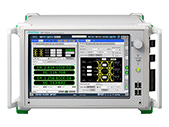 Anritsu Corporation (President Hirokazu Hamada) has published details on the MP1900A web site about its new FEC Analysis function of the 116-Gbit/s PAM4 Error Detector (ED) MU196040B option for the Signal Quality Analyzer-R MP1900A series. Anritsu Corporation (President Hirokazu Hamada) has published details on the MP1900A web site about its new FEC Analysis function of the 116-Gbit/s PAM4 Error Detector (ED) MU196040B option for the Signal Quality Analyzer-R MP1900A series.
The MP1900A series is a high-quality bit error rate tester (BERT) for evaluating next-generation 400 and 800GbE*1 high-speed devices and transceivers. The newly announced FEC Analysis function is the first time for a BERT to support real-time measurement of Forward Error Correction (FEC) Symbol Errors*2; in addition to conventional bit error measurement, it also supports jitter tolerance*3 measurements for assessing error correction capability using FEC as required by transmissions using high-speed PAM4*4 signals. Sales of this new MU196040B option start in March 2021.
Background
Data centers supporting next-generation, high-speed, large-capacity 5G mobile communications are progressing with introduction of equipment meeting the 400GbE communications standard, while also starting investigation of 800GbE and 1.6 TbE standards to facilitate even faster speeds.
The PAM4 transmission method used by 400GbE expresses digital data using four voltage levels per unit time to transmit twice as much data compared to the earlier conventional NRZ*5 method. However, due to the narrower differences between the four voltage levels, the greater susceptibility to noise and transmission path losses makes error-free transmission more difficult than using the conventional NRZ method. As a result, error correction using FEC is applied to assure transmission quality. Consequently, evaluation of devices and transceivers supporting PAM4 not only requires jitter tolerance and sensitivity evaluations based on conventional bit error and error-free measurements, but also requires measurement of error correction capability using FEC.
Product Outline
To meet the above-described need, Anritsu has added this new FEC Analysis function for detecting FEC Symbol Errors based on the 400GbE FEC standard to its PAM4 ED with world-beating input-sensitivity performance. Using this new function, changes in bit errors and FEC Symbol Errors with changes in input amplitude and jitter conditions can be monitored in real-time to quickly and reproducibly evaluate when Symbol Error counts exceed the correction ability of FEC.
Moreover, since this new FEC Analysis function is compatible with conventional jitter tolerance automatic measurement software, one-button jitter tolerance measurement is supported based on whether or not error correction using FEC is possible.
The Signal Quality Analyzer-R MP1900A series is the market-leading BERT for testing various high-speed interfaces, including 400GbE and future 800GbE, etc. Adding the high-sensitivity PAM4 ED MU196040B with expanded FEC Analysis functions supporting reliable bit error and FEC Symbol Error measurements will help cut development times for high-speed devices and transceivers.
(Source: Convergence Plus)
|
 Founded by Ashneer Grover and Shashvat Nakrani in 2018, BharatPe offers merchants a single interface for all UPI apps like Paytm, PhonePe, Google Pay, BHIM, Mobikwik, Freecharge and others. It also facilitates loan facility for its merchant partners.
Founded by Ashneer Grover and Shashvat Nakrani in 2018, BharatPe offers merchants a single interface for all UPI apps like Paytm, PhonePe, Google Pay, BHIM, Mobikwik, Freecharge and others. It also facilitates loan facility for its merchant partners. 
 Cisco initially offered to acquire Acacia for $70 a share, or $2.6 billion in July 2019.
Cisco initially offered to acquire Acacia for $70 a share, or $2.6 billion in July 2019. The updated policy terms were first announced via an in-app notification to users by WhatsApp, owned by Facebook, asking them to agree to the new terms by February 8 or lose access to their accounts.
The updated policy terms were first announced via an in-app notification to users by WhatsApp, owned by Facebook, asking them to agree to the new terms by February 8 or lose access to their accounts. The investment targets for overseas players would be fixed at around Rs 500 crore spread over a period of four years (Rs 125 crore per year) while for local companies it would be Rs 20 crore (Rs 5 crore per year).
The investment targets for overseas players would be fixed at around Rs 500 crore spread over a period of four years (Rs 125 crore per year) while for local companies it would be Rs 20 crore (Rs 5 crore per year).
 The government expects to gain revenues of Rs 40,000 crore from the telecom sector, less than a third of the budget estimate of Rs 1.33 lakh crore.
The government expects to gain revenues of Rs 40,000 crore from the telecom sector, less than a third of the budget estimate of Rs 1.33 lakh crore.
 The most interesting development is a claim made by OpenRAN major Mavenir at the recent BSNL meeting, which was attended by home-bred and multinational vendors and system integrators. Texas-based Mavenir claimed that their 4G core is indigenous, at least three senior executives from vendors told ET.
The most interesting development is a claim made by OpenRAN major Mavenir at the recent BSNL meeting, which was attended by home-bred and multinational vendors and system integrators. Texas-based Mavenir claimed that their 4G core is indigenous, at least three senior executives from vendors told ET.
 Anritsu Corporation (President Hirokazu Hamada) has published details on the MP1900A web site about its new FEC Analysis function of the 116-Gbit/s PAM4 Error Detector (ED) MU196040B option for the Signal Quality Analyzer-R MP1900A series.
Anritsu Corporation (President Hirokazu Hamada) has published details on the MP1900A web site about its new FEC Analysis function of the 116-Gbit/s PAM4 Error Detector (ED) MU196040B option for the Signal Quality Analyzer-R MP1900A series.

